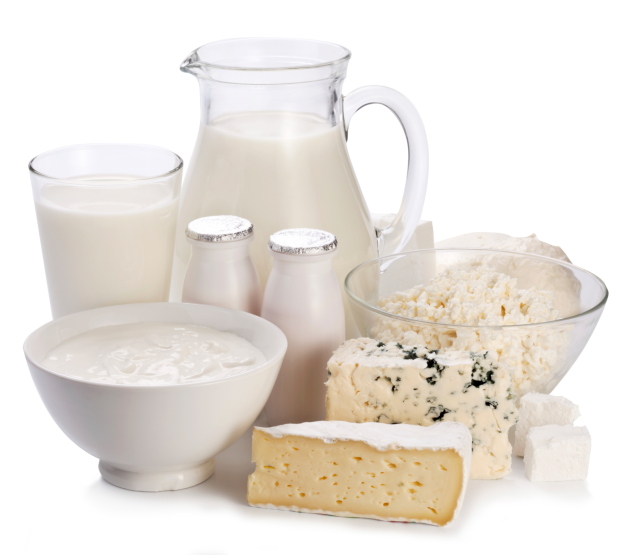 Dark circles, under-eye bags, white spots and acne. These are all your skin's worst nightmares. If you suffer from any of these things you may be surprised to know the saying 'you are what you eat' may be playing out in full effect here. The new term, coined "dairy face", refers to your skin's reaction to eating any dairy products.
Dark circles, under-eye bags, white spots and acne. These are all your skin's worst nightmares. If you suffer from any of these things you may be surprised to know the saying 'you are what you eat' may be playing out in full effect here. The new term, coined "dairy face", refers to your skin's reaction to eating any dairy products.
Apparently, our Western diets are often the culprit behind struggles with our skin. According to practitioners of naturopathic medicine, who perform "face readings," like Dr. Nigma Talib, she see a lot of "dairy face, wine face and gluten face." The effects of these things in our system show up in ways we most often don't find attractive. Simply put, your body is sometimes more sensitive to some foods we ingest than others.
MUST READ: 5 Foods That Cause Inflammation
Dairy, specifically, creates more sebum in the skin and the hormones in the milk can cause inflammation and premature breakdown of your skin cells.
In Dr. Nigma's new book, Reverse the Signs of Aging, she discusses her theory of "eating for beauty" and she motivates you to learn which foods causes your skin to react in ways that aren't pleasing.
MUST READ: 5 Foods That Make You Look Tired
You may have heard someone saying as they've gotten older they can't seem to tolerate lactose as well as they did as a child. Well this is because as we age the enzymes in our bodies that help with the digestion of dairy products decrease, causing your body to produce inflammation-inducing chemicals. According to Dr. Nigma, the best way to combat this is by cleaning up your gut. You can do this by eating foods rich in vitamin A such as eggs, liver and carrots, as well as vitamin E, found in nuts and leafy vegetables.
If you have a milk allergy, proteins in milk cause your immune system to overreact. There are two main types of protein in milk:
Casein. Casein (kay-SEEN) is a byproduct of milk when it spoils and turns solid (curdles). You can also find it in cheese and yogurt. It accounts for about 80% of the protein in milk, and it gives milk its white color.
Whey. Whey is a byproduct of the liquid part of milk when it curdles. It accounts for 20% of the protein in milk.
You may be allergic to one or both of the proteins.
In addition to your dairy allergy showing up on your skin, there are also delayed allergies (called non-IgE mediated) that can take up to three days for symptoms to manifest. Those who experience delayed allergic reactions often report ‘thick note syndromes’ (patients with long medical history files that no doctors have been able to help). The symptoms triggered by a dairy allergy may often look like disease and can seem elusive given their delayed response. The unifying mechanism underlying all these symptoms is inflammation. Here are a few delayed reactions you need to look out for on your body:
1. Joint pains
Studies as far back as 1986 have illustrated improvements in joint symptoms (and even rheumatoid arthritis) with a diet that eliminates dairy. Participants who suffered from joint pain and permanently eliminated dairy from their diets experienced pain relief, while those who reintroduced milk and dairy reported a return of their joint pain symptoms.
2. Asthma, Sinus Issues, and Other Respiratory Problems
The casein in dairy can cause increased mucus production in the airways and lungs. Over time, this excess mucus may lead to asthma symptoms and recurrent sinus problems like chronic sinusitis.
3. Fatigue and Weight Loss Resistance
Fatigue is such a common symptom of a dairy allergy, and while there are many other causes (issues with your thyroid or hormonal imbalance), if a full medical workup has been conducted and no cause for fatigue can be identified, it is advisable to discuss the possibility of a dairy allergy or other food sensitivity with your medical provider.
To take your skin regime a step further, you could opt out of dairy altogether. This may sound alarming, but it really isn't as necessary to keep dairy in your diet as you might think. Women are said to need about 1000 mg of calcium per day. This can be achieved through foods like fish, beans, figs, collard greens, kale, soybeans, spinach and hummus, among many other options.
Read More At KissTheChaos.com and follow me on Instagram: @Ooolala_laa








